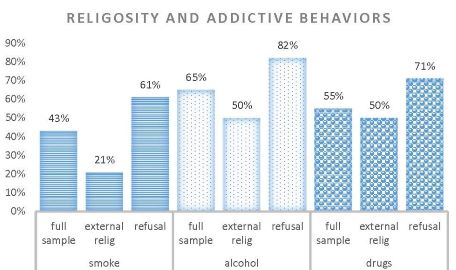Using data for young Romanians a research paper finds that it is external religiosity that interacts with weaker addictive behaviors like smoking, drinking and using drugs. The study is now published OPEN ACCESS in the Journal of Economics, Management and Religion.
Religiosity, Smoking and Other Addictive Behaviors
by Roman, Monica & Zimmermann, Klaus F. & Plopeanu, Aurelian-Petruș
Published: Journal of Economics, Management and Religion (JEMAR), Vol. 3, No. 2 (2022), 2250001. https://doi.org/10.1142/S2737436X22500017
OPEN ACCESS FREE PDF
Abstract: While under communism the identity-providing religion was suppressed, religiosity is strong today even among the youth in post-communist countries. This provides an appropriate background to investigate how external and internal religiosity relates to risky behaviors like smoking, drinking, and drugs among the young. This study shows that not religion as such or internal religiosity, but largely observable (external) religiosity prevents them from wallowing in those vices. While this is found strongly for both males and females, those females doubting or reflecting religion show a somewhat smaller risky activity.
Ends;


